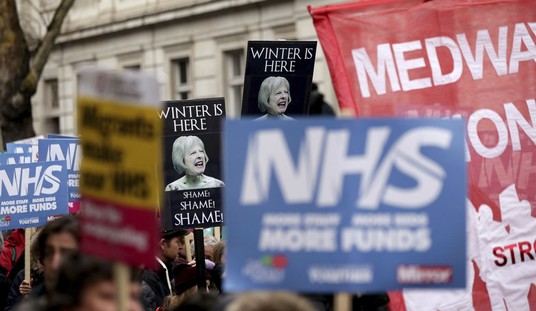While they’re there they should see if they can lend a hand with COVID, as Michigan is number one with a bullet today among the 50 states in COVID cases per capita and number two in hospitalizations per capita. Any state with large populations of African-Americans and rural whites, two cohorts with higher-than-average vaccine skepticism, won’t be done with the pandemic for awhile. And with an “unusual” flu outbreak happening right now on the U of M campus, Michigan may be in for a nasty resurgence of influenza on top of it.
It could be the first U.S. state to experience a “twindemic,” something scientists feared last year but which the U.S. ultimately avoided. Precautions taken to prevent COVID infections, like masking and social distancing, were effective last winter against the spread of influenza, a virus to which all of us already have built up some natural immunity. As a result, the flu has been all but unheard of in the United States since COVID arrived.
This winter might be different.
The first positive flu case was reported Oct. 6. and exploded to 528 cases of influenza diagnosed over the past five weeks at the University of Health Service (UHS), the university said in a statement Monday…
UHS officials saw flu cases skyrocket on campus over the past two weeks, with 313 cases reported the week of Nov. 8, with 37 percent of tests coming back positive…
Juan Luis Marquez, the medical director at the Washtenaw County Health Department, said though it’s normal to see some flu activity at this time of the year, “the size of this outbreak is unusual.”
A familiar phenomenon: 77 percent of those at the University of Michigan who have tested positive hadn’t gotten their flu vaccine yet this year.
Let’s put those numbers in perspective, though. While the size of the outbreak in Ann Arbor is “unusual,” flu is still barely circulating in the wider U.S. The CDC’s most recent numbers show a 0.3 percent positivity rate nationally and only two states are experiencing moderate or severe flu activity. Just one in a thousand long-term care facilities had reported cases of the flu this season as of November 6. In fact, one Michigan epidemiologist speculated that the reason her campus’s outbreak appears unusually large is because students with symptoms are much more likely to get tested than they were in years past. If you have fever, headache, chills, and so on in 2021, your first assumption will be that you have COVID and you’ll run to the campus clinic for confirmation. Maybe in previous flu seasons the same number of kids were getting infected but many declined to get tested for the flu since they simply assumed that they had it and that it was no big deal.
On the other hand, U of M isn’t the only campus to have experienced an outbreak lately. A school in New Jersey has seen 150 cases this month, most of them recorded in the past week, and two universities in Florida detected spikes a few weeks ago. It’s out there and circulating. The CDC is on the ground in Michigan not because 500 cases on campus is some public-health emergency but because they’re eager to know what they’re up against with respect to this season’s strain. How well does this year’s flu shot work against the type of flu that’s spreading? How are students who have the flu and COVID simultaneously faring? This is the CDC’s first opportunity to observe how influenza might operate when SARS-CoV-2, another highly contagious airborne pathogen, is endemic.
The most ominous detail in the Michigan outbreak isn’t the number of people infected, it’s the difference in vaccination rates between this year and last year across that state and across the nation.
In Michigan, 2.2 million doses of flu vaccine have been administered this year, a figure that represents about 22 percent of the state’s population, according to state data. Vaccination rates have lagged in every age category compared with those of the previous two years…
An estimated 43.2 million flu vaccinations had been administered nationally in pharmacies and doctor’s offices to people 18 or older by the end of October, Ms. Grusich said. About 62.4 million doses were administered in the same time period last year, she said.
You would think that 18 months of bitter experience with a virus’s ability to kill would have led Americans towards higher uptake of the flu vaccine instead of lower, but here we are. Why are people less likely to get the shot this year than last year? Three reasons, I’d guess. After there were hardly any flu cases last winter, many have adjusted their assessment of the risk from the disease by assuming they won’t get infected. Beyond that, general fatigue with pandemic precautions and the impulse to get back to normal may be causing them to skip yet another shot at the pharmacy. Most of all, it’s probably the case that skepticism about the COVID vaccine is bleeding over into other vaccines and causing some people to become full-spectrum vax skeptics. “There’s a lot of folks saying information that may not be true about COVID vaccines, and so then it kind of makes them question flu vaccines,” said one Missouri health official about low rates of flu vaccination this season.
There may be a partisan effect to that. Harry Enten recently crunched the numbers on who has and hasn’t gotten their flu shot so far this fall and noted that, in years past, there was hardly any gap between Democrats and Republicans. But as partisan politics over the COVID vaccine have turned acidic and polarizing, Democrats seem to have veered towards general pro-vaxxism while Republicans have lurched towards general anti-vaxxism. Two recent polls cited by Enten show a 25-point difference between Dems and GOPers on the flu shot, with Dems more likely to get it than they used to be and GOPers less likely.
That makes scientists nervous since the next big flu season is expected to be a beast. Because people didn’t encounter the virus last year, their immune systems are out of practice in recognizing it and generating the antibodies needed to fight it off. But if it’s true that we’re in store for another nasty winter wave of COVID, as the daily numbers suggest, that may reduce the chances of a bad flu season. After all, the scarier COVID looks, the more likely people will be to revert to social distancing and masking, the same tactics that held the flu at bay last winter. Flu may hit harder this year but, unless COVID is in retreat, not very hard.








Join the conversation as a VIP Member